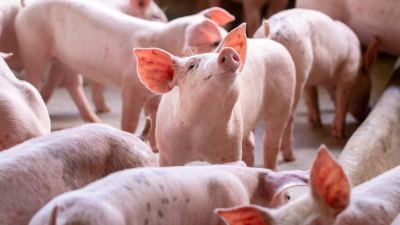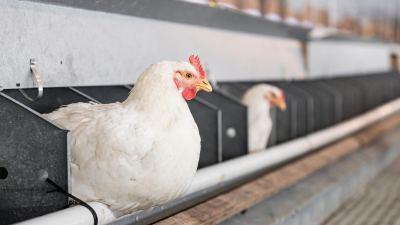Choosing a mineral supplement: What can the tag tell you?

Setting up an effective supplement program is more than simply finding the right mineral at the right price. Knowing your herd’s needs and thoughtfully comparing them to supplement labels will go a long way toward increasing profitability.
Here are the steps you can take to choose the right mineral supplement for your herd.
1. Define your goal
Beef animals require protein, energy, certain vitamins, and both macrominerals and microminerals on a regular basis.
Though minerals are needed at much lower levels than protein, they do perform vital functions directly correlated to animal health, growth and reproductive efficiency. Even microminerals, also known as trace minerals, are essential to health, growth and reproductive function, even though the amounts needed are very small.
The problem is that mineral amounts within cultivated forages vary between forage types and even from season to season, and they are often insufficient for the animal’s needs. Therefore, there is a need to supplement, and selecting a proper mineral supplementation strategy can become quite complicated with all the different product offerings and brands available.
In selecting the right program for your herd, it is helpful not only to understand your forage quality but also to think about what goals you want to achieve. Choosing a supplement merely to prevent a deficiency is a completely different strategy — at a completely different price point — than supplementing for optimized performance, health and profitability.
So, how can you compare and evaluate supplementation programs and then select the appropriate program to support your herds’ nutritional needs and match your goals?
2. Look at the product tag
The first step will be to take a good look at the tag or tags of the products you are interested in. Product tags can be a wealth of information, as they can help you to understand not only the composition of the product but the quality of ingredients, to a certain extent. The Association of American Feed Control Officials (AAFCO) regulates the information that has to be included, and the minimum requirements for a cattle supplement tag include:
- Product and brand name
- Purpose statement: This identifies the species and class of animal the product was created for.
- Guaranteed analysis: This gives you an idea of which minerals might be included and at what rates.
- List of ingredients: All ingredients included in the formulation must be listed in descending order of predominance by weight, though they may not be included in the guaranteed analysis. This is where additives, such as enzymes or yeast cultures, are listed if they are included in the formulation.
- Directions for use, or any limitations/precautions
- Manufacturer and/or distributor information
Let’s start by focusing on the guaranteed analysis section of the tag.
First, keep in mind that various factors will affect how much of any given mineral an animal will need across its lifespan. Requirements will vary by age, stage of production, and mineral availability in forages. To find out a particular animal’s needs, you can consult references readily available online, or your Alltech rep will be glad to advise you.
Next, calculate whether the animal’s needs will be met by this particular supplement. Note that these calculations can be confusing since vitamins are listed in international units — per kilogram (kg) or pound (lb.) — while macrominerals are listed as percentages (%) and trace minerals are listed as parts per million (ppm).
Again, your Alltech rep can help you evaluate this, but here’s an example: If you see phosphorus (P) listed on the tag at 7% and the product is a 4-ounce mineral, then you can quickly calculate that since 4 ounces is 0.25 lb., 7% of that is 0.0175 lb. You can then easily compare this to the phosphorus requirement for the animal and decide whether, with the addition of the basal levels of phosphorus found in its forages and feedstuffs, the animal will be getting all the necessary phosphorus.
When comparing the pricing of different programs, also be sure to look at feeding rates, monitoring actual consumption if possible. When comparing two different brands, if one is a 4-ounce mineral and one is a 2-ounce mineral, you can divide the cost of a 50-pound bag by the number of feedings, which will tell you the cost per animal per day — an easier comparison than just looking at the cost per bag.
3. Know the differences between forms of minerals
Another thing the tag can tell you is what form each mineral is in. This is vital information, because when it comes to minerals, especially trace minerals, the form makes a big difference. In fact, it’s much more important than the amount. This has to do with bioavailability, meaning how readily available the mineral is to be utilized by the animal’s body.
Trace minerals can be offered in both inorganic and organic forms.
- Inorganic trace minerals are often byproducts from the mining industry and other industrial processes. They are less expensive than organic options, which require the manufacturer to bind the mineral to peptides and amino acids. However, that doesn’t always translate to cost savings in the long run, as inorganics must be fed at higher levels to overcome their poor bioavailability.
- Organic forms, which are more representative of what the animal would find in nature or forages and are thus more bioavailable, protecting profitability in the long run.
To know what sources of trace minerals are included in a particular supplement, check the ingredient list. The terms “sulfate,” “oxide” or “chloride” will indicate inorganic forms, while “proteinate” indicates organic forms such as Bioplex® trace minerals, which provide zinc, manganese, copper, iron and cobalt in a bioavailable form that can be provided at lower levels while seeing better results.
Level of supplementation is extremely important. We have seen the negative health impacts associated with mineral deficiencies, but over-supplementation, especially with inorganic trace mineral sources, can be detrimental as well, leading to mineral-to-mineral interactions and the degradation of other essential nutrients, including vitamins. Also, trace minerals that are not absorbed and utilized by the animal are simply excreted, causing not only waste but potential environmental harm.
Conclusion
While carefully reading a product’s tag and then comparing it to your animals’ specific needs across seasons and life cycles takes a little time, it quickly becomes second nature, and the payoff in herd health, profitability and sustainability is substantial.
For example, optimizing trace mineral status in stressed animals such as stockers and receiving cattle can amplify their immunity and their responses to vaccines and certain health challenges, including bovine respiratory disease.
The benefits to reproductive efficiency have also been well documented: getting more cows bred earlier in the cycle, higher conception rates, improvements in the number of embryos harvested and in embryo quality, better passive immune transfer, and heavier calves at weaning.
Supplementation with organic trace minerals such as Bioplex minerals can even affect fetal programming during gestation, boosting the reproductive development and performance of the developing calf, even while in utero.
Keep in mind that just as there are differences between inorganic and organic trace minerals, there are also different categories and brands of organic trace minerals. Not all brands are equal in quality, and that can translate to major impacts on overall bioavailability and animal performance. Always ask for product-specific research when you make your decision. Alltech’s decades of research and expertise are a great resource. Just contact your Alltech rep or email the Mineral Management team at knowyourminerals@alltech.com. We look forward to helping you select the perfect mineral supplementation program for your needs.















